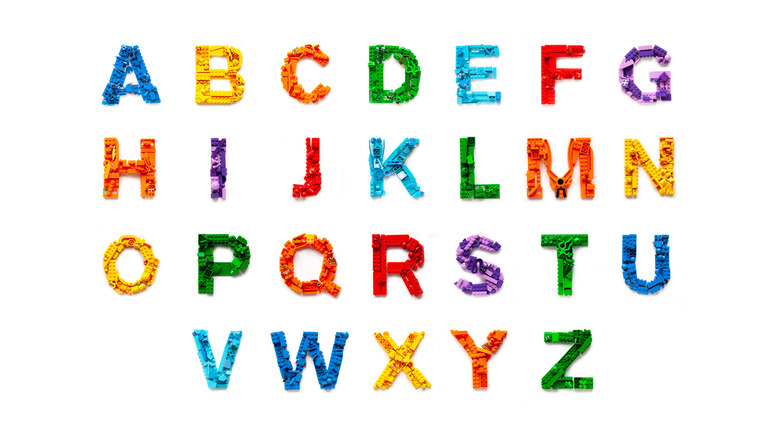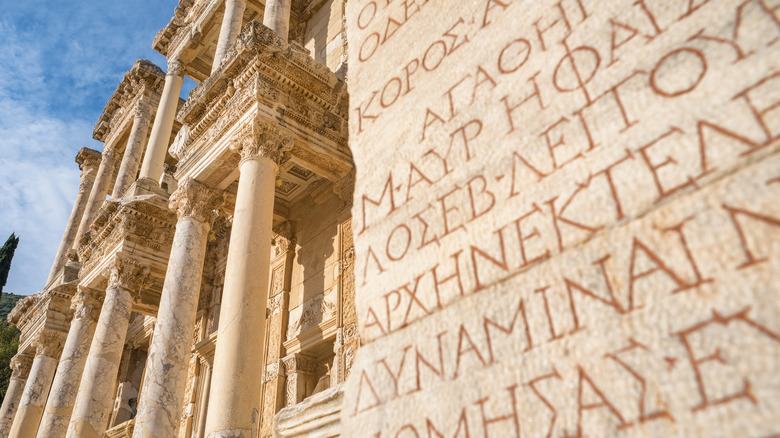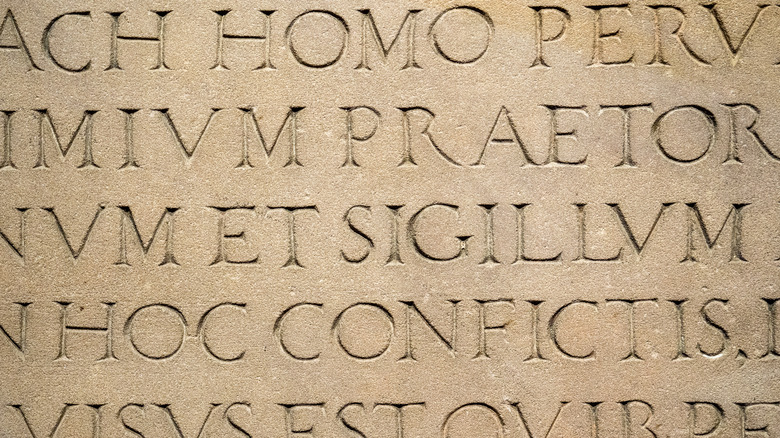Why Is The Alphabet In The ABC Order It Is?
One of the first songs sung to many English-speaking children is "The ABC Song" or "The Alphabet Song. (Or, if fastidious attention to musical history is your bag, "The ABC, a German air with variations for the flute with an easy accompaniment for the piano forte," according to Today I Found Out.)
It goes without saying that ever since this song has been a thing, children (and their parents) have been singing it in a way that pays respect to a certain order of the letters. No one is singing, "B, C, F, K, L, D, O ..." and there's a reason for that: For as long as the English alphabet (itself a variant of the Roman alphabet) has been a thing, it has been expressed in that particular order, for reasons that history hasn't quite yet figured out.
However, the history of the alphabet, from its origins in trade routes around the Mediterranean Sea, provides a few clues as to how and why it's rendered today in a specific order.
From Ancient Sumerian To Ancient Greek
Written language — at least, as it relates to the series of characters that would become the English alphabet — began in ancient Mesopotamia (where the modern-day nation of Iraq sits), between 3400 and 3300 B.C. (per the British Library). The writing system was almost certainly based on pictographs, much like the ancient Egyptian system — which would develop a couple of centuries later — and even modern-day written Mandarin.
Within a few thousand years, however, the pictographic writing systems would be replaced by a system where the characters represent sounds rather than concepts. As Mental Floss explains, by around 1900-1500 B.C., the Phoenicians — an ancient seafaring society that traded all across the Mediterranean region — began using this writing system, and of course, it was eventually picked up by other people groups in the region.
One group that picked up on it was the ancient Greeks around the 8th century B.C. Brown University provides a helpful chart showing the progression from hieroglyphs to Phoenician letters to Greek ones. Further still, the Greeks also added vowels to their alphabet — something the Phoenician one lacked.
From Ancient Greek To Ancient Roman To Modern English
The ancient Romans borrowed quite a bit from the ancient Greeks, including its religion and its alphabet, which they developed and modified for their own use. However, the alphabet took a bit of a detour in getting to Rome; as Britannica reports, the Roman (or Latin) alphabet was derived from that of another group of people on the Italian Peninsula, the Etruscans. It just so happens that the Etruscan alphabet was itself informed by the Greek one, and the Romans modified the alphabet to work within their own language.
From there, it's not hard to see how the alphabet became the alphabet of English. The Romans conquered all of the landmass that is now Europe, including the British Isles. With some Germanic runes thrown in for good measure, we eventually wound up with the English alphabet, which is actually mostly Roman (per History Extra). And of course, it goes without saying that the vast majority of European written languages make use of their own local variant of the Roman alphabet, which generally can be counted on to look almost exactly like the English one, save for some additions, subtractions, and diacritical marks.
But Why Are The Letters Ordered?
There are two questions to be looked at here: Why is the English/Roman alphabet in any order at all, and why is it in its current specific order? And as it turns out, there's no clear answer to either of those questions (via Mental Floss). We do know that there's millennia-old precedent for putting letters in order. Back in the 1920s, archaeologists in the Middle East came across some stone tablets that featured letters — proto versions of what would become the English/Roman alphabet — and they were in the same (more or less) order that we'd find today: "a, b ... g, h ... l, m ... q, and r" (although obviously some additions have been made since then).
Putting the letters in order makes sense as a teaching and reference tool, but we don't know who decided on that order or why. One hypothesis is that the ancient Egyptians had a mnemonic device for memorizing their own pictographs and that practice informed the practice of putting letters in a particular order. Another is that it was maybe informed by musical scales, or perhaps it has something to do with the annual dance of the stars and planets across the sky. Science ABC posits that they were grouped together by similar sounds, for example, or because they were similarly structured (note the "U," "V," and "W" all right next to each other).
How Other Alphabets Are Ordered
It goes without saying that English is not the only language that uses the Latin-based alphabet. Pretty much all of the written languages of Europe — Spanish, German, Polish, etc. — use the Latin alphabet, albeit with local variant letters and diacritical marks. However, other languages also use an alphabetic script (which is to say, where the symbols represent sounds, as in Hebrew, and not concepts, as in Mandarin). They, like the Roman alphabet, have an order. Here are a few examples.
As Judaism 101 explains, the Hebrew alphabet begins with "alef" and ends with "tav," although why they're in that order is unclear. However, the website notes that some of the Hebrew letters' names, and their order, is derived from Greek (although they look nothing alike), which used an order. Another non-European language that uses an alphabet to depict sounds is Hangul, used in North and South Korea. Those letters are also ordered, although the reason for the order is unclear. The Georgian alphabet (depicted above), or Mkhedruli, is also ordered; the letters are ordered according to their Greek equivalent, and the Georgian sounds that don't have a Greek equivalent are added at the end.




